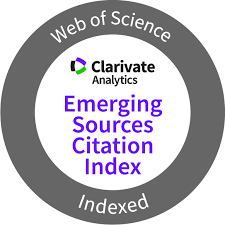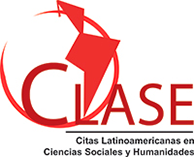Caracterización sectorial y de género de los Influenciadores de Medios Sociales en X
DOI:
https://doi.org/10.7764/cdi.60.78650Palabras clave:
engagement, género, sector de actividad, social media influencer, TOPSIS, Twitter, XResumen
Para llevar a cabo campañas de comunicación de marketing de influenciadores es necesario estudiar su idoneidad y la de la red social a utilizar. Esta investigación pretende poner de manifiesto la caracterización de X (anteriormente Twitter) en función del sector de actividad y el género de los influenciadores de medios sociales (SMI, por su sigla en inglés) tan exitosos que pueden considerarse celebridades. Para ello, se analizó la presencia y el engagement de 60 SMI españoles, recopilando los últimos 3200 tuits originales de cada influenciador. El análisis de la presencia por sector y género se realizó mediante estadística descriptiva. Para estudiar el engagement se utilizó el índice compuesto calculado en Muñoz y sus colegas (2022), obtenido mediante el método multicriterio TOPSIS, a partir del cual se han estudiado las diferencias de sector y género. Los principales resultados indican que los sectores con mayor presencia en X son el tecnológico, el de negocios y, en menor medida, el de videojuegos. Este último es el que consigue mayores niveles de engagement. Sin embargo, este no viene condicionado solo por el sector de experiencia del SMI, sino que depende en gran medida de su personalidad. En cuanto el género, es principalmente masculino, que también es el que consigue un mayor engagement. Estos resultados hacen de X una red especialmente adecuada para promocionar productos relacionados con el sector de videojuegos y aquellos destinados al público de género masculino.
Descargas
Citas
Anasi, S. N. (2018). Influence of gender on attitude towards the use of social media for continuing professional development among academic librarians in Nigeria. Information and Learning Science, 119(3–4), 226–240. https://doi.org/10.1108/ILS-11-2017-0114
Bakker, D. (2018). Conceptualising Influencer Marketing. Journal of Emerging Trends in Marketing and Management, 1(1), 79–87. https://www.etimm.ase.ro/RePEc/aes/jetimm/2018/ETIMM_V01_2018_57.pdf
Balbuena, A., Málaga, M., Morán, J., Osterling, A., & Valdivia, E. (2016). Voces virtuales : Análisis de la comunicación bidireccional y engagement en Facebook de dos partidos políticos en las elecciones nacionales 2016 (Virtual voices : Analysis of two-way communication and engagement on Facebook of two political parties in the 2016 national elections). Comunicación Política, (28), 6-33. https://hdl.handle.net/20.500.12724/6077
Bode, L. (2017). Closing the gap: Gender parity in political engagement on social media. Information Communication and Society, 20(4), 587–603. https://doi.org/10.1080/1369118X.2016.1202302
Bui, N. H. (2017). Exploring similarity characteristics, identification, and parasocial interactions in choice of celebrities. Psychology of Popular Media Culture, 6(1), 21–31. https://doi.org/10.1037/ppm0000082
Catalina-García, B. & Suárez-Álvarez, R. (2022). Twitter interaction between audiences and influencers. Sentiment, polarity, and communicative behaviour analysis methodology. Profesional De La Información, 31(6), e310618. https://doi.org/10.3145/epi.2022.nov.18
Choi, S. M. & Rifon, N. J. (2012). It is a match: The impact of congruence between celebrity image and consumer ideal self on endorsement effectiveness. Psychology & Marketing, 29(9), 639–650. https://doi.org/10.1002/mar.20550
Dalyot, K., Rozenblum, Y., & Baram-Tsabari, A. (2022). Engagement patterns with female and male scientists on Facebook. Public Understanding of Science, 31(7), 867–884. https://doi.org/10.1177/09636625221092696
Demailly, Z., Brulard, G., Selim, J., Compère, V., Besnier, E., & Clavier, T. (2020). Gender differences in professional social media use among anaesthesia researchers. British Journal of Anaesthesia, 124(3), e178–e184. https://doi.org/https://doi.org/10.1016/j.bja.2019.12.030
Evans, H. K. & Clark, J. H. (2016). “You tweet like a girl!”: How female candidates campaign on Twitter. American Politics Research, 44(2), 326–352. https://doi.org/10.1177/1532673X15597747
Feng, R. & Ivanov, A. (2023). Gender differences in emotional valence and social media content engagement behaviors in pandemic diaries: An analysis based on microblog texts. Behavioral Sciences, 13(1). https://doi.org/10.3390/bs13010034
Goldsmith, R. E., Lafferty, B. A., & Newell, S. J. (2000). The impact of corporate credibility and celebrity credibility on consumer reaction to advertisements and brands. Journal of Advertising, 29(3), 43–54. https://doi.org/10.1080/00913367.2000.10673616
Goyanes, M., Tóth, T., & Háló, G. (2024). Gender differences in google scholar representation and impact: An empirical analysis of political communication, journalism, health communication, and media psychology. Scientometrics, 129, 1719–1737. https://doi.org/10.1007/s11192-024-04945-0
Hoegele, D., Schmidt, S. L., & Torgler, B. (2016). The importance of key celebrity characteristics for customer segmentation by age and gender: Does beauty matter in professional football? Review of Managerial Science, 10, 601–627. https://doi.org/10.1007/ s11846-015-0172-x
Hoffner, C. & Buchanan, M. (2005). Young adults’ wishful identification with television characters: The role of perceived similarity and character attributes. Media Psychology, 7(4), 325–351. https://doi.org/10.1207/S1532785XMEP0704_2
Hu, L., Kearney, M. W., & Frisby, C. M. (2023). Tweeting and retweeting: Gender discrepancies in discursive political engagement and influence on Twitter. Journal of Gender Studies, 32(5), 441–459. https://doi.org/10.1080/09589236.2021.1995340
Hubner, A. Y. & Bond, R. (2022). I am a scientist.. Ask Me Anything: Examining differences between male and female scientists participating in a Reddit AMA session. Public Understanding of Science, 31(4), 458–472. https://doi.org/10.1177/09636625211048775
Hudders, L. & De Jans, S. (2022). Gender effects in influencer marketing: An experimental study on the efficacy of endorsements by same- vs. other-gender social media influencers on Instagram. International Journal of Advertising, 41(1), 128–149. https://doi.org/10.1080/02650487.2021.1997455
Just, M., Crigler, A. N., & Owen, R. (2016). Candidate use of Twitter and the intersection of gender, party, and position in the race: A comparison of competitive male/female Senate races in 2012 and 2014. In R. Davis, C. Holtz Bacha, & M. R. Just (Eds.), Twitter and Elections around the World, February (pp. 157–174). Routledge. https://doi.org/10.4324/9781315669113
Karimi, S., Shakery, A., & Verma, R. (2023). Enhancement of Twitter event detection using news streams. Natural Language Engineering, 29(2), 181–200. https://doi.org/10.1017/S1351324921000462
Kellner, D. (1996). Sports, Media Culture, and Race – Some Reflections on Michael Jordan. Sociology of Sport Journal, 13(4), 458–467. https://doi.org/10.1123/ssj.13.4.458
Kemp, S. (2023, January 2023). Digital 2023. Global overview report. https://datareportal.com/reports/digital-2023-global-overview-report
Klar, S., Krupnikov, Y., Ryan, J. B., Searles, K., & Shmargad, Y. (2020). Using social media to promote academic research: Identifying the benefits of twitter for sharing academic work. PLoS ONE, 15(4), e0229446. https://doi.org/10.1371/journal.pone.0229446
Knobloch-Westerwick, S., Glynn, C. J., & Huge, M. (2013). The Matilda effect in science communication: An experiment on gender bias in publication quality perceptions and collaboration interest. Science Communication, 35(5), 603–625. https://doi.org/10.1177/1075547012472684
Kumar, A. (2011). A study of various leadership styles and their importance for celebrities in Brand Endorsements. Research Journal of Social Science and Management, 1(2), 2–16. Los 100 mejores influencers 2020 (Top 100 Influencers 2020). (2020, October 1). Forbes. https://forbes.es/listas/76585/los-100-mejores-influencers-2020/74/
Lee, K., Palsetia, D., Narayanan, R., Patwary, M. A., Agrawal, A., & Choudhary, A. (2011). Twitter trending topic classification. In M. Spiliopoulou, H. Wang, D. Cook, J. Pei, W.
Wang, O. Zaïane, & X. Wu (Eds.), ICDMW 2011. 11th IEEE International Conference on Data Mining Workshops Twitter (pp. 251–258). IEEE. https://doi.org/10.1109/ICDMW.2011.171
Lilleker, D., Koc-Michalska, K., & Bimber, B. (2023). Women learn while men talk?: Revisiting gender differences in political engagement in online environments. In A. Schiffrin, K. Koc-Michalska, & M. Ferrier (Eds.), Women in the Digital World (pp. 46–62). Routledge. https://doi.org/10.1080/1369118X.2021.1961005
Lunardo, R., Gergaud, O., & Livat, F. (2015). Celebrities as human brands: An investigation of the effects of personality and time on celebrities’ appeal. In D. Brownlie, P. Hewer, & F. Kerrigan (Eds.), Celebrity, Convergence and Transformation (pp. 685–712). Routledge. https://doi.org/10.4324/9781315188300
Muñoz, M. M., Rojas-de-Gracia, M. M., & Navas-Sarasola, C. (2022). Measuring engagement on Twitter using a composite index: An application to social media influencers. Journal of Informetrics, 16(4), 101323. https://doi.org/10.1016/j.joi.2022.101323
Newberry, C. (2023, October 4). Should You Post to All Social Media at Once? Hootsuite. https://blog.hootsuite.com/post-to-all-social-media-at-once/
Patahuddin, S. M., Rokhmah, S., Caffery, J., & Gunawardena, M. (2022). Professional development through social media: A comparative study on male and female teachers’ use of Facebook Groups. Teaching and Teacher Education, 114, 103700. https://doi.org/10.1016/j.tate.2022.103700
Pear Analytics. (2009). Twitter Study - August 2009. https://pearanalytics.com/wp-content/ uploads/2012/12/Twitter-Study-August-2009.pdf
Power, A. (2014). Twitter’s potential to enhance professional networking. British Journal of Midwifery, 23(1), 65–67. https://doi.org/10.12968/BJOM.2015.23.1.65
Rogers, R. (2014). Foreword: Debanalising Twitter: The transformation of an object of study. In S. Jones (General Ed.), Twitter and Society (pp. ix–xxv). Peter Lang.
Rojas-de-Gracia, M.-M., Alarcón-Urbistondo, P., & Casado-Molina, A.-M. (2019). Is asking only one member of a couple sufficient to determine who influences tourism decisions? Journal of Destination Marketing & Management, 12, 55–63. https://doi.org/10.1016/J.JDMM.2019.03.005
Samuel-Azran, T. & Yarchi, M. (2023). The “gender affinity effect” behind female politicians’ social media support: Facebook civil talk during Israel’s 2021 elections. Online Information Review, 47(6), 1168–1189. https://doi.org/10.1108/OIR-04-2022-0199
Schiffman, L. G., Kanuk, L. L., & Wisenblit, J. (2010). Consumer Behavior (10th ed.). Pearson Education/Prentice Hall.
Wagner, E., Mendes, P. H., & Storch, F. (2023). The influence on cosmetics purchase intention of electronic word of mouth on Instagram. Journal of Promotion Management, 29(7), 961-991. https://doi.org/10.1080/10496491.2023.2167897
Wagner, K. M., Gainous, J., & Holman, M. R. (2017). I am woman, hear me tweet! Gender differences in Twitter use among congressional candidates. Journal of Women, Politics and Policy, 38(4), 430–455. https://doi.org/10.1080/1554477X.2016.1268871
Woitowich, N. C., Arora, V. M., Pendergrast, T., Gottlieb, M., Trueger, N. S., & Jain, S. (2021). Gender differences in Physician use of social media for professional advancement. JAMA Network Open, 4(5), e219834. https://doi.org/10.1001/jamanetworkopen.2021.9834
Yarchi, M. & Samuel-Azran, T. (2018). Women politicians are more engaging: Male versus female politicians’ ability to generate users’ engagement on social media during an election campaign. Information Communication and Society, 21(7), 978–995. https://doi.org/10.1080/1369118X.2018.1439985
Zhu, J. M., Pelullo, A. P., Hassan, S., Siderowf, L., Merchant, R. M., & Werner, R. M. (2019). Gender differences in Twitter use and influence among health policy and health services researchers. JAMA Internal Medicine, 179(12), 1726–1729. https://doi.org/10.1001/jamainternmed.2019.4027
Archivos adicionales
Publicado
Cómo citar
Número
Sección
Licencia
Derechos de autor 2025 María del Mar Muñoz Martos, María-Mercedes Rojas-de-Gracia

Esta obra está bajo una licencia internacional Creative Commons Atribución-NoComercial-CompartirIgual 4.0.















